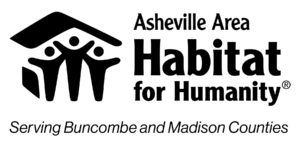By Emily Sears, AAHH Advocacy Team member
At the turn of the twentieth century, federal, state, and local governments wrote policies that spurred harmful economic and social division between black and white neighborhoods. Each level of government institutionalized racially restrictive language in housing deeds as part of an attempt to “maintain social cohesion” in communities. This blatant form of de jure segregation, or segregation through laws and policies, has disproportionately disadvantaged black communities across the nation and here in Buncombe County. Even though the racially restrictive covenants are no longer enforceable since they were declared unconstitutional in 1948, the language still remains in deeds across the country.
It recently came to the attention of Asheville Area Habitat for Humanity that a parcel of land they purchased possesses a deed which contains a racially restrictive covenant. The language in this deed states that the property cannot be sold to “any person of the colored race.” As an organization that condemns structural racism in our housing system, Asheville Habitat will not transfer this deed to another owner with this abhorrent language. Asheville Habitat, in partnership with Pisgah Legal Services, is working to ensure the racist language is nullified for this deed and hopes that other homeowners will follow this example.
The legacy of racially restrictive covenants has affected communities of color in numerous detrimental ways. Discriminatory housing practices are not a new concept in America, especially in terms of racial segregation. The Great Migration in the late 1800s was the catalyst for modern housing segregation. For many blacks in the South who wanted new opportunities, the manufacturing and industrial sectors, mainly found in cities, provided an opportunity for entire families to move away from sharecropping and towards a new source of income. As African Americans began to settle in the urban centers along the East Coast, lawmakers started to consider the use of racially restrictive zoning covenants to keep neighborhoods racially homogenous. Not only were these covenants intended to keep neighborhoods segregated, but they were also legal.
One of the first landmark federal cases to address racially restrictive covenants was Shelley v. Kraemer in 1948. The Supreme Court ruled that racially explicit housing covenants violated the Equal Protection Clause of the Fourteenth Amendment and could therefore not be used for the purpose of segregating neighborhoods. After many years of Supreme Court cases and government policies, the Fair Housing Act of 1968 was signed into law by President Lyndon B. Johnson. It clearly stated that it “prohibits discrimination by direct providers of housing, such as landlords and real estate companies as well as other entities, such as municipalities, banks or other lending institutions and homeowners insurance companies whose discriminatory practices make housing unavailable to persons because of: race or color, religion, sex, national origin, familial status, or disability.”
Over the past few months, Asheville Area Habitat has dedicated time and resources to ensure that this type of harmful language is removed from the Arden property deed, and hopefully inspiring others to do the same. Additionally, Habitat’s Communications Specialist Maddy Alewine has been busy interviewing a number of people for a video she is producing about the topic of racially restrictive covenants and the impact they’ve had locally. Stay tuned for the video debut in February 2021.
In order to begin reckoning with our own county and region’s history of racial injustice and how it has shaped our neighborhoods, it is important to call attention to historic and present-day examples of prejudice that still remain within the institutions that hold power. As our Executive Director, Andy Barnett wrote, “Over the coming months, Asheville Habitat will engage in other efforts to dismantle the ways race continues to deny strength, stability, and self-reliance to our neighbors. I hope you will join us.”
To see a Glossary of Terms related to housing segregation, click here.
To watch a video that helps visually depict the intentional segregation of residential communities based on race, watch the 18 minute Segregated by Design video.




